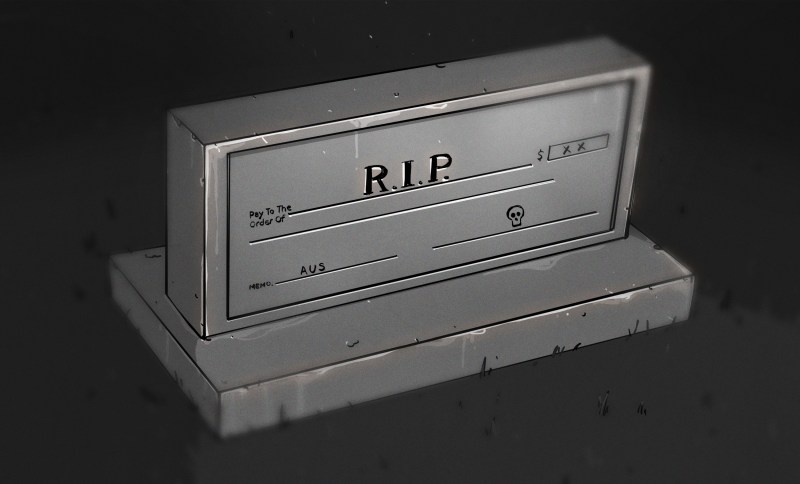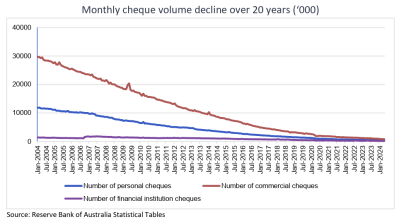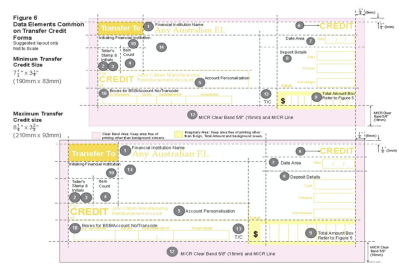
Check (or cheques) have long been a standard way for moving money from one bank account to another. They’re essentially little more than a codified document that puts the necessary information in a standard format to ease processing by all parties involved in a given transaction.
The check was once a routine, if tedious, way for the average person to pay for things like bills, rent, or even groceries. As their relevance continues to wane in the face of newer technology, though, the Australian government is making a plan to phase them out for good.
Put Some Respect On My Check

The pending demise of the checks was first floated in June 2023, with the release of the government’s Strategic Plan for Australia’s Payments System. With the rise of credit and debit cards, digital payments via smartphones, and Osko instant bank transfers, checks had diminished to a lower level of importance than ever.
Government statistics indicated that checks were used for less than 0.1% of retail payments within Australia. In 2004, over 10,000,000 personal checks were used every month. Fast forward to 2024, and that number had dwindled to somewhere below 300,000. As volumes have fallen, the price of processing individual checks has effectively increased. In an era where digital payments happen instantly for near-zero cost, a check can take 3 to 7 days to clear, with government statistics stating processing costs for a single check now exceed $5.
Ultimately, the check is now seen as a slow and unwieldy way to make payments, and one no longer worthy of being maintained into the future. Companies have even been questioned openly in the media for the rationale of still using checks to issue refunds in this day and age. The rationale is that winding down the check system for good will lead users to prioritize cheaper, faster methods of transferring money. The aim is to reduce transaction costs, improve productivity in the financial system, and just generally grease the wheels of commerce across the country.

The current transition plan has two major milestones. By 30 June 2028, Australian banks will cease issuing personal, commercial, government, and bank checks. Any check written after this date will not be accepted and effectively deemed invalid, with no payment made. By 30 September 2029, financial institutions will cease accepting personal, commercial, government and bank cheques entirely. Any remaining checks, whenever created, will effectively be void.
These dates were chosen specifically because personal, commercial, and government checks go “stale” 15 months after they are first drawn. Thus, checks of these types that are written on the very last valid day will still be able to be cashed in the usual period of validity before the system is shut down for good. The intention is that there will be no checks that would otherwise still be valid to cash past 30 September 2029 had the system not been closed. Bank checks do not technically go “stale,” so there is still an open question as to whether there will be a need to honor unpresented bank checks after this date.
There are still a few years left until the big shut down. This gives the government and financial institutions time to ensure they have alternative payment methods in place for the handful of remaining check use cases. There are some concerns that various banks may attempt to leave the checking system prior to the government shut down date, burdening other financial institutions with the costs of keeping the system afloat until the end. The government has stated its expectations that banks will work together to ensure a smooth transition.
To that end, there are exit conditions expected to be adhered to for banks that are shutting down checking. Tier 1 banks are expected to maintain operations until the end date to support smaller institutions that rely on them for check clearing services. Additionally, banks which cease checking operations must still remain members of the Australian Paper Clearing System and fund the system. Banks will also need to provide 6 month warnings to customers ahead of any decision to shut down their checking operations.
While the domestic Australian checking system will shut down, this will not impact foreign checks coming into the country. Since these checks are processed outside the existing Australian checking system, this will not be an issue—financial institutions that process foreign checks will continue to do so.
